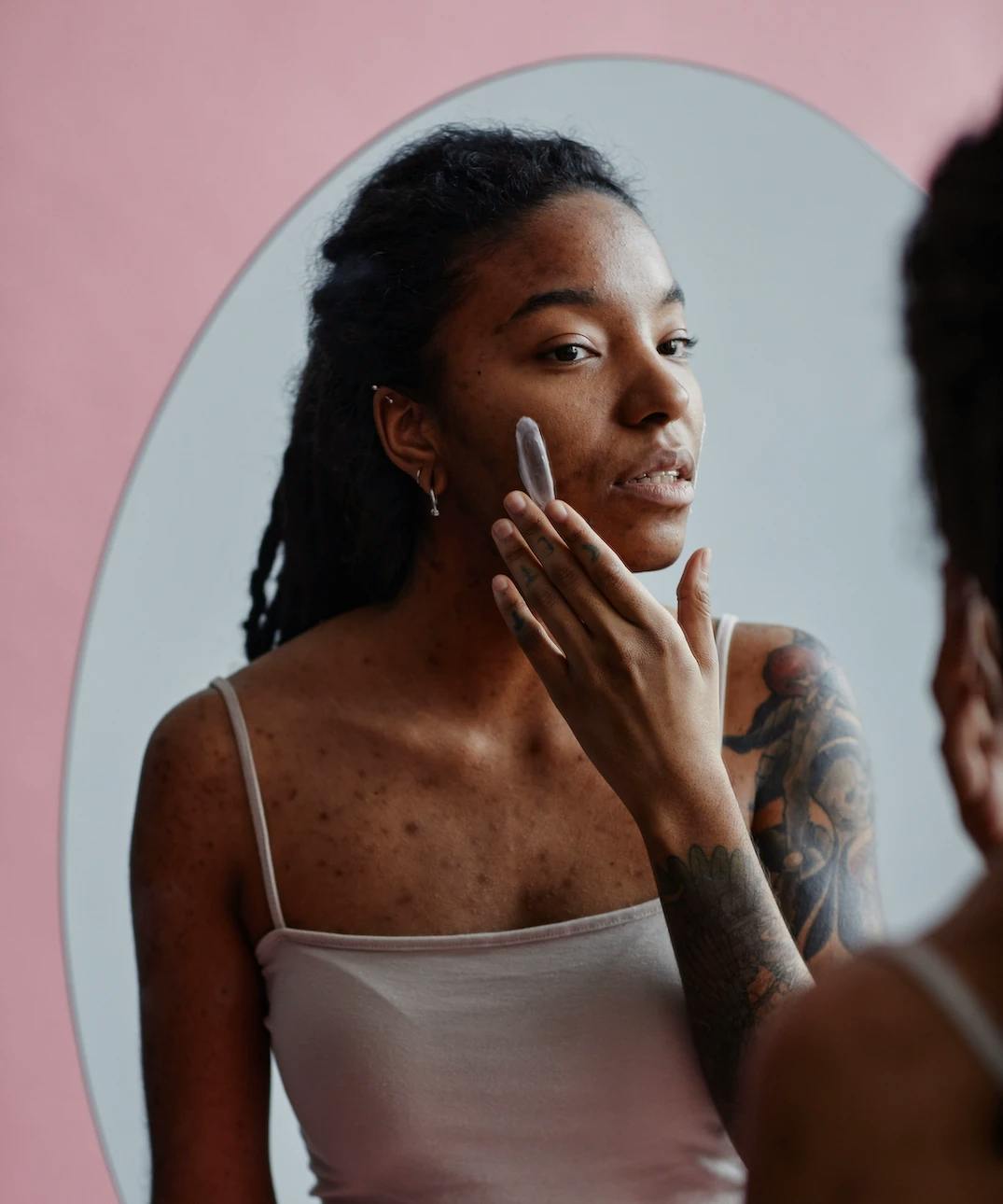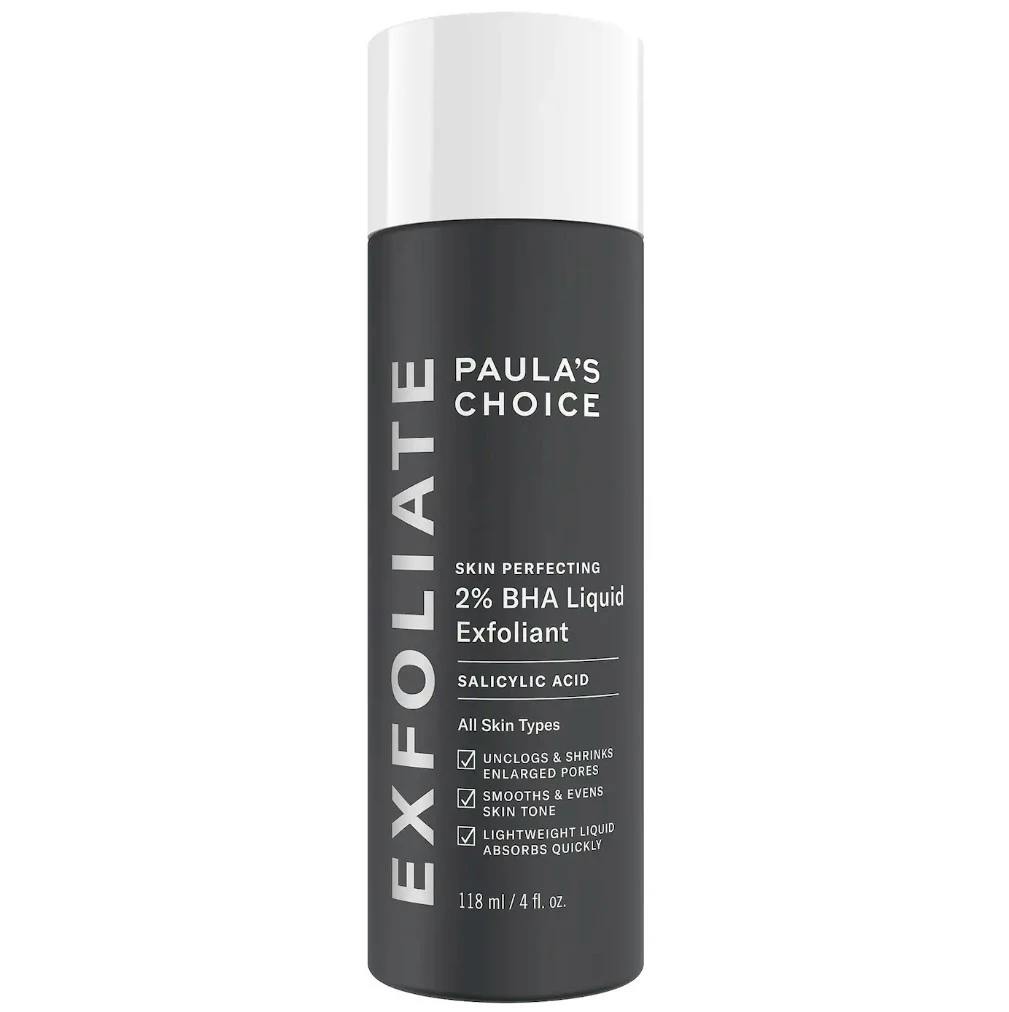Are You Having A Hormonal Or Bacterial Breakout? How To Tell The Difference Between The Kinds Of Acne
Hormonal acne is a discouraging term used to describe pimples that, like clockwork, show up on your skin during certain times of the month to remind you how powerless you are. But is the issue really skin deep, or can it be tackled by eliminating a particular strain of bacteria that has made your pores their loving home?

Chances are that if you're dealing with acne, you have at least once in your life heard or tried to justify this dreadful occurrence by saying “it's just hormonal" – and you wouldn't be wrong.
But how do you explain the stubborn spots that deviate from the “rule” that hormonal acne only appears on the lower facial areas? Or the breakouts that linger for more than a month?
The answer lies in differentiating the triggers of hormonal acne and bacterial acne. Therefore, in this article, we will explain the difference between the two kinds of acne and provide valuable solutions that will help you maintain the complexion of your dreams.
Evie's product selections are curated by the editorial team. If you buy something through our links, we may earn an affiliate commission, at no cost to you. We only recommend products we genuinely love.
How Can I Tell If It’s Hormonal or Bacterial Acne?
There are a few significant differences between hormonal and bacterial acne that make differentiating them a tad bit easier. One of the main differences between hormonal and bacterial acne is the trigger that causes this condition to form. Hormonal acne is caused by some sort of hormonal imbalance, typically an abnormal or prolonged spike in androgens, the male group of hormones responsible for bone and muscle development, while bacterial acne is caused by an overgrowth of bacteria inside the pores.
Experiencing deep, painful pimples in certain areas during certain times of the month can be a pretty good indication that you are dealing with hormonal acne. Caused by drops in some hormones and elevation in others, such as estrogen and androgens, hormonal acne typically appears in areas like the jawline, chin, and lower cheeks.
However, not everyone is lucky to only experience hormonal outbreaks during some times of the month, and a long-term hormonal imbalance that can occur as a result of an inflammatory diet, prolonged stress, or a poorly functioning thyroid can lead to more chronic skin issues that can stick around for a long time.
Bacterial acne, on the other hand, is directly caused by a bacterial overgrowth inside the pores. This type of acne is a more superficial issue and is usually easier to tackle with the right treatment. Typically appearing in larger areas, such as the cheeks, forehead, back, bum, and chest, bacterial acne usually presents itself as whiteheads, blackheads, pustules, and cysts.
A single strain of bacteria that prefer a tight, airless environment, such as a clogged pore, known as C. acnes, is usually the main culprit behind this inflammatory skin issue.
Only balancing your hormones or only addressing the bacteria with a skincare routine rarely works.
But here's the most confusing part about hormonal and bacterial acne – the process of pimple formation is pretty much the same. Hormonal acne, while triggered initially by hormones, also has a bacterial element to it, as overactive hormones can stimulate the oil glands into overproducing oil which gets stuck inside the pores due to the sheer volume. This attracts bacteria that use it as a food source to grow and proliferate. The abnormality then triggers the immune system into reacting, sending an army of white blood cells to the site to fight the overgrowth of bacteria, and this "war" is what results in the red, swollen, and sometimes pus-filled bump we see on our skin as a pimple. This is why differentiating between the two inflammatory conditions can be confusing.
So how do we sort out the cause of our acne to treat it? We might not get a clear answer by assessing our symptoms, which is why the focus should be on the potential trigger. Treating acne, more often than not, requires making changes in multiple areas of your life to help tackle the issue from different angles. Only balancing your hormones or only addressing the external part through a skincare routine rarely works, while a holistic approach to clear skin is always the most effective way to manage this stubborn inflammatory condition.
How To Treat Hormonal and Bacterial Acne
Regardless of the cause, acne is an inflammatory skin condition that should be addressed from multiple angles, as targeting only one factor will rarely give satisfactory results and can often make matters worse.
A prime example of this is trying to get rid of acne by buying every single product that has "antibacterial" written on it, which is how you end up nuking your skin barrier and causing an even bigger microbial imbalance that will only exacerbate the issue and likely be the cause of a new and more stubborn skin problem.
Or trying to balance your hormones by jumping straight to hormonal medications, such as birth control pills or spironolactone, without considering making a change in the everyday habits that might've led to the hormonal imbalance in the first place.
Instead of relying on topical products alone or hormonal medications that might cause even worse health issues down the line, it's important to focus on the entire body and look for possible triggers hidden inside your lifestyle. With that said, here are the most effective ways to treat hormonal and bacterial acne simultaneously:
Use the Right Skincare Products
While what you're dealing with might be hormonal acne, using the right skincare products can nevertheless help in tackling the external element of the issue. To help keep harmful bacteria at bay and reduce the preferred environment for the pathogen to thrive in, having a complete skincare routine consisting of a gentle cleanser, a hydrating serum, a solution such as an exfoliating toner or pore-clearing retinoids, and a moisturizer to keep the moisture barrier strong, healthy, and balanced is key.
Additionally, consider adding mineral sunscreen to the mix to prevent discoloration and post-inflammatory scarring from remaining on the skin after the pimples have healed.
Products To Try

Gentle, hydrating, and fantastic for removing daily impurities accumulated on the skin's surface, the Foaming Face Wash from CeraVe is a great starting point for anyone looking for a simple but effective cleanser.
The Ordinary Niacinamide 10% + Zinc 1% Oil Control Serum, $6

Lightweight, hydrating, and skin-soothing, the Niacinamide 10% + Zinc 1% Oil Control Serum by The Ordinary will not only calm redness and irritation caused by bacterial overgrowth, but will also balance out the oil production and prevent clogging, essentially reducing the chances of new breakouts from forming.
Paula's Choice Skin Perfecting 2% BHA Liquid Exfoliant, $34

A skin-soothing and balancing toner that gently exfoliates to clear out the cellular debris inside the pores and reveal a smoother, brighter, and healthier complexion, the Paula's Choice 2% BHA Liquid is a must-have for anyone dealing with all types of acne.
The Ordinary Granactive Retinoid 2% Emulsion, $12

Fantastic for acne-prone skin, this lightweight, non-greasy Granactive Retinoid 2% Emulsion by The Ordinary will increase cellular turnover and clear out clogged pores while also targeting multiple signs of aging and improving your overall complexion.
Dermalogica Skin Smoothing Cream Moisturizer, $47

Fantastic for oily and acne-prone skin due to not containing potentially clogging oils, and with the ability to strengthen the skin barrier while smoothing out rough, uneven texture, the Dermalogica Skin Smoothing Cream Moisturizer is an absolute must-have for anyone looking for a moisturizer that does it all!
La Roche-Posay Anthelios Mineral Tinted Ultra Light Face Sunscreen Fluid SPF 50, $39

The lightweight tint that covers up imperfections while protecting the skin from environmental pollutants and UV-induced damage makes the La Roche-Posay Anthelios Tinted Mineral Sunscreen a daily essential.
Make Dietary and Lifestyle Changes
An inflammatory diet and unhealthy lifestyle habits can truly do a number on your hormones and influence their activity in all the wrong ways. For example, constantly consuming foods that contain inflammatory components such as sugar, seed oils, processed grains, dairy, and more can cause a prolonged spike in certain hormones, such as the IGF-1 hormone that's naturally found in your blood. This hormone has an important function in managing tissue and bone growth, but it has also been shown to raise inflammation in the body when its levels are high. High inflammation in the body can cause skin issues of all sorts, and hormonal and bacterial acne are no exception.
On the other hand, destructive lifestyle habits, such as excessive drinking, smoking, poor sleep quality, prolonged periods of stress, etc., can also influence hormones and lead to imbalances by increasing their activity. For example, chronic stress can increase cortisol levels, the hormone responsible for how your body deals with what it perceives as a dangerous situation; however, too much of it can lead to inflammatory spikes that can manifest on the skin as conditions such as acne.
This is why turning to a healthier lifestyle, such as practicing mindfulness, exercising regularly, getting enough sleep, avoiding high-stress situations, and making positive dietary changes, such as including foods that are rich in inflammation-relieving antioxidants, can be essential for not only balancing hormones but also tackling skin issues that might occur as a direct result of the inflammation caused by these abnormalities, including both hormonal and bacterial acne.
Practice Hands-On Detox Methods
While replacing unhealthy lifestyle habits and making positive dietary changes can help balance your hormones and heal your skin from the inside out, there are also hands-on detox methods you can practice to reap the benefits of healthy skin and mental clarity by healing yourself through your touch.
Certain massage techniques, such as gently stimulating the lymphatic system, which is the pathway for reducing inflammation and eliminating the accumulation of cellular debris and bacteria from the body, can be incredibly helpful in improving skin health.
Using tools such as jade rollers or gua shas to stimulate circulation underneath the skin's surface can help loosen up blockages inside the pores while promoting healing through increased oxygenation that delivers essential nutrients to the skin.
These massage techniques can not only improve circulation and infuse your skin with the essential vitamins, minerals, and oxygen it needs to be healthy and function optimally but can also relieve tension and headaches and improve sleep quality, which will, in turn, keep cortisol levels in check, ultimately resulting in a more balanced hormonal system and fewer breakouts.
Invest in Your Skin
Finally, investing in your skin by treating yourself to a monthly facial can not only help you maintain a clear and glowing complexion but can also take the guesswork out of the equation. Your esthetician will be able to pinpoint what kind of acne you're dealing with and help you understand the differences better as well as recognize what might be causing these issues and how to avoid them in the future.
Facials are often thought of as a luxury or something you should only do for a special occasion, but these treatments are super relaxing, and besides maintaining your skin in tip-top shape, they can also help reduce stress and tension and improve your overall well-being. If you're able to skip your weekly Starbucks order or resist the urge to buy yet another pair of Lululemon leggings, we'd suggest using those funds to invest in a facial instead.
Closing Thoughts
The differences between hormonal and bacterial acne might be subtle, but taking the time to understand your skin and what might be causing these issues can make all the difference when it comes to creating a successful treatment plan.
Support our cause and help women reclaim their femininity by subscribing today.